Overview of types of flush toilets

When repairing a bathroom or a separate toilet, everyone is faced with the problem of which toilet is better to install there. This device, which has been used by man since the 16th century, is not only an elementary necessity in modern life, but in some cases also a design element worthy of completing the idea of decorating a room.
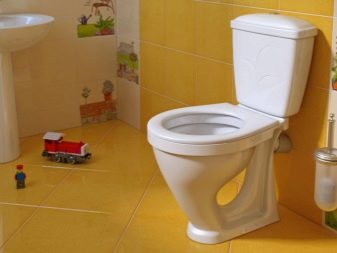

Constructions
The first person who was able to appreciate all the delights of a device with a mechanical flush cistern in the toilet was the Queen of England in 1596. However, the royal apartments lacked water supply and sewerage systems, so people could use this device only 150 years later, when English inventor T. Twyford improved his product and gave it a very original name Unitas, meaning "unity".
If you are going to purchase a much-needed piece of plumbing, you need to know how it works.
All toilets are a 3-piece construction:
- bowls;
- drain tank;
- a toilet seat or as it is more often called a seat.
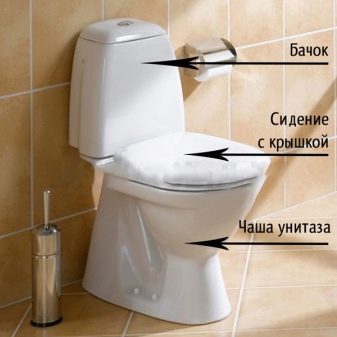
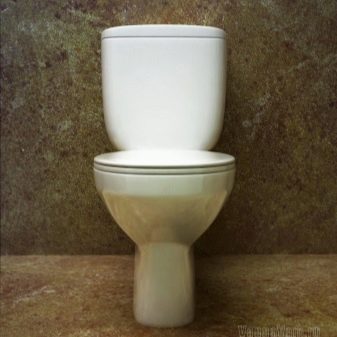
The cistern contains the main elements that allow it to function:
- the release lever activates the mechanism "responsible" for flushing the toilet;
- float and valve supplying water;
- drain valve.
All these components are very important, but the main thing in the toilet is the bowl, or rather, its shape. Manufacturers offer a variety of models today: bowls that look like a flat plate, a funnel or a visor from a cap.
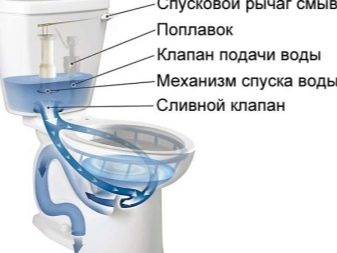

Experts believe that the most hygienic of the above funnel-shaped toilet bowl. The funnel allows you to instantly wash off all the waste products of the human body, "twisting" them into a funnel, however, there are splash options in this case.
Round, plate-shaped bowls are hardly used today. - they do not meet hygienic requirements.
The flatter bowl, similar to the visor of the headgear, has a lip to help prevent splashing when rinsing.
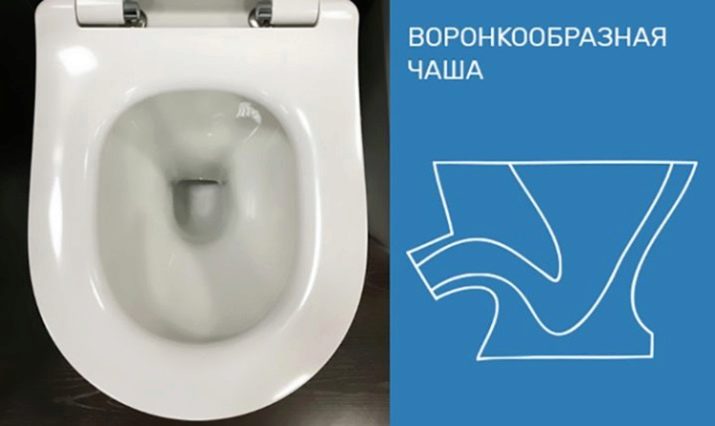
Toilet bowls with shelf produced in the Soviet Union. Their special difference is the presence of a kind of shelf, which prevents the splash of the drained water. However, there are also disadvantages here - after several uses of the drain mechanism, it is precisely this device that becomes the most contaminated, so there is a need for additional accessories, for example, a toilet brush, with which you will have to clean this shelf.
The main problem - water splashing from the toilet bowl - directly depends on the water level in it. Experts believe that the smaller the amount of water, the less likely the occurrence of splashes.
Bowl shape with so-called "tilt" on the back walls of the device can be called the "golden mean" between the classic form and the funnel: in such a toilet bowl, water goes down without unnecessary splashes, and the walls of the bowl are almost always guaranteed to be cleaned.
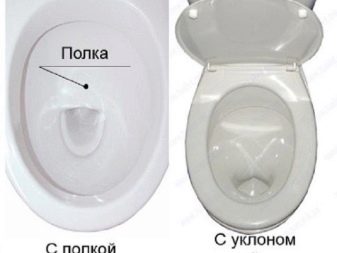
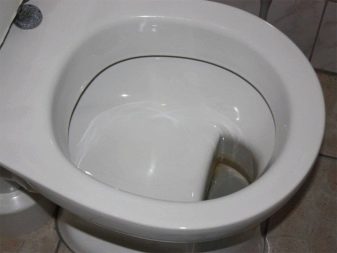
Toilet bowls are produced in different shapes and heights, despite certain requirements of the standards. Manufacturing companies try to satisfy all the requirements and wishes of their customers.
Plum varieties
Faced with the choice of toilets with different types of flushing, you need to decide which one is better and more practical. Draining directly depends on the flow of water from the tank, and today any consumer has the opportunity to choose a model with an “ideal” flush.
Water wash-offs are of several types.
- Cascading (direct). This type of plum is rather rare today. In this model, the water from the tank descends into the bowl in a continuous stream simultaneously over its entire surface.
This is a fairly reliable method, but there is no guarantee of complete cleaning of the entire bowl. Therefore, it is necessary quite often to resort to various household chemicals.
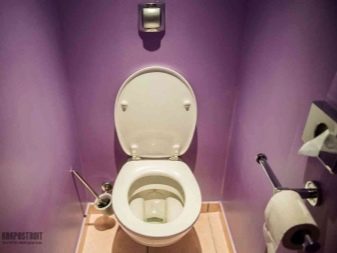
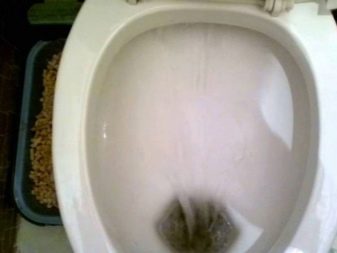
- Circular water flush allows waste to be flushed at different angles into the center hole. In this case, almost the entire surface of the bowl is cleaned of contamination. The flow of water in such a toilet does not make noise, which is quite convenient in small apartments, where sound permeability is good.
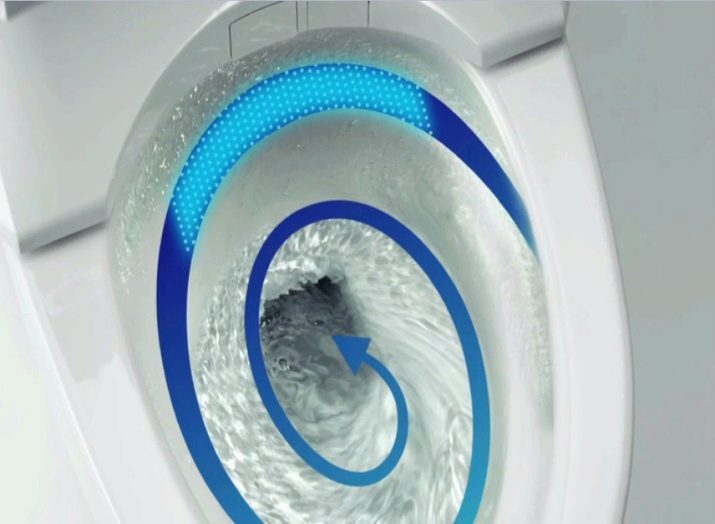
- Cumulative flush of water today it is quite rare to meet. In this case, the toilet bowl is filled with a large amount of water, which after a while is quickly discharged (vacuum toilets on trains work according to this principle). The design is equipped with a pneumatic drain mechanism that is triggered by pressing a special foot device - a pedal. This pedal mechanism is guaranteed to clean the entire surface of the bowl.
The disadvantage of this model is obvious: an inaccurate water consumption - up to 8 liters of liquid at a time.

- Today, you can often find toilet models. with automatic type of drain, that is, the user does not need to press any button or lever: the “smart” product is equipped with a special device triggered by an infrared sensor. The water is drained off after the end of the hygienic procedure practically "independently". This process is controlled remotely thanks to the sensor.

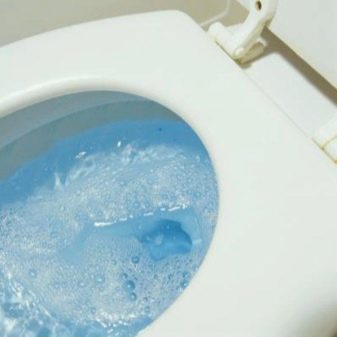
- There are also options for flushing in the toilet without main element - without tank. In this case, it is replaced by a drain valve and the water flow appears directly from the water supply.
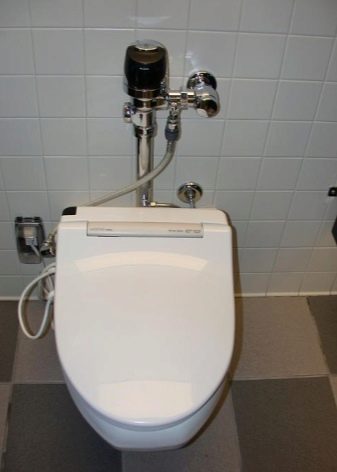

- Quite common and vacuum toilets, they are mainly used in public places. Outwardly, they are no different from their counterparts, but their mechanism of work is rather peculiar.The water valve, which is attached with a hose to the flush hole, closes after a certain period of time when the flush has already taken place. After a new filling of water into the tank, it is necessary to press a special button, and air begins to be sucked into the toilet bowl, removing all waste, including unpleasant odors.
Thanks to the vacuum system, a new flush into the toilet then takes place, and the water valve returns to its place.
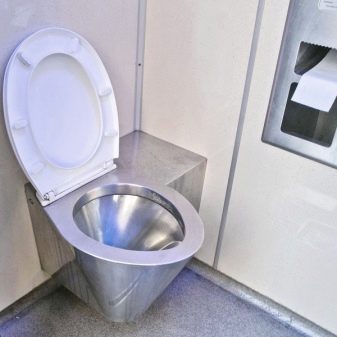
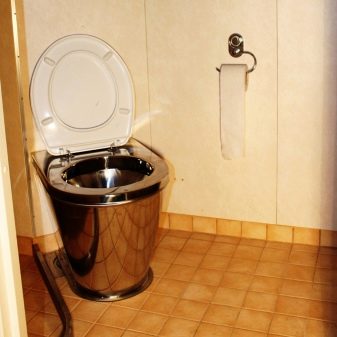
The flush mechanism in the toilet is also important, according to this principle, you can also choose a plumbing fixture that suits you.
- Horizontal flush - water flows directly from the tank without changing its direction. Usually such a drain is used by Russian manufacturers. This is a completely simple mechanism, but it has a number of disadvantages: with such a system, not the entire bowl is covered, and the water flow in this case "makes noise" and produces a lot of splashes.
- With circular flush (reverse draining) the water changes direction and completely cleans all impurities, and the circular movement of water is quite silent. Such a system is called "slotted"; it is this system that is also often used by domestic manufacturers. In some designs, two buttons are installed in the tank, which allow not to drain all the water from the container, but only part of it.
- Vertical drain is also called deep. In such a toilet, an inclined surface is of great importance, due to which the volume of water very quickly goes into the neck. The inclined surface in such models is located in different ways - in front, in the center or on the back wall. By the way, it is she who prevents the penetration of unpleasant odors from the sewer. Water and air work together very efficiently.

Cistern options
When choosing a convenient and practical toilet model, you must also consider the types of cisterns, as well as drain fittings, so that the design fully meets your requirements.
Almost all types of tanks can be roughly divided into two subspecies.
- Open - located at the top.
- Hidden - embedded or installed inside the structure. Purely visually, such a model resembles a plastic canister, it looks more presentable, but it also costs more.
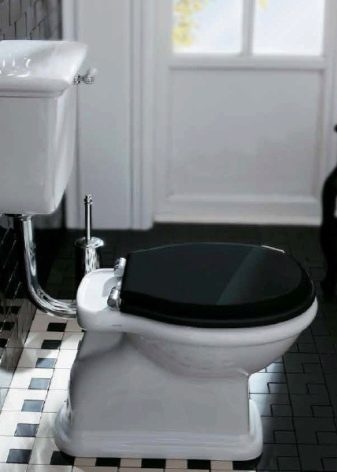

The first, open tanks, also have several varieties.
- Suspended, that is, connected to the toilet with a special pipe and secured at the required height. Thanks to this, the water is drained into the main bowl with a strong pressure, ensuring a high-quality drainage of the contents.
- Mounted on the toilet shelf itself - in this case, the cistern is directly connected to it using a rubber hose without a special pipe.
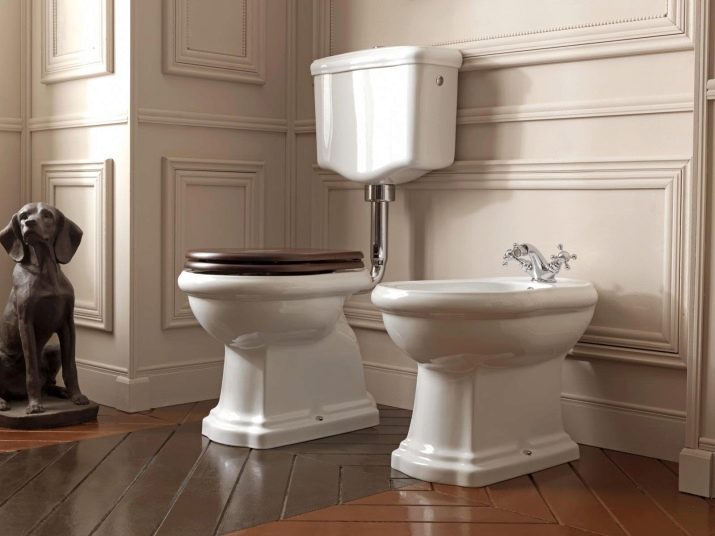
Drain fittings of any kind work according to the same principle: a special valve closes the drain hole, and it can only be put into operation by pressing a button, if the toilet is not a sensor type.
Recently, manufacturers often offer models with double buttons on the toilet cistern, one of which ensures the full volume of water is drained, the second, in order to save money, "doses" the volume of liquid.
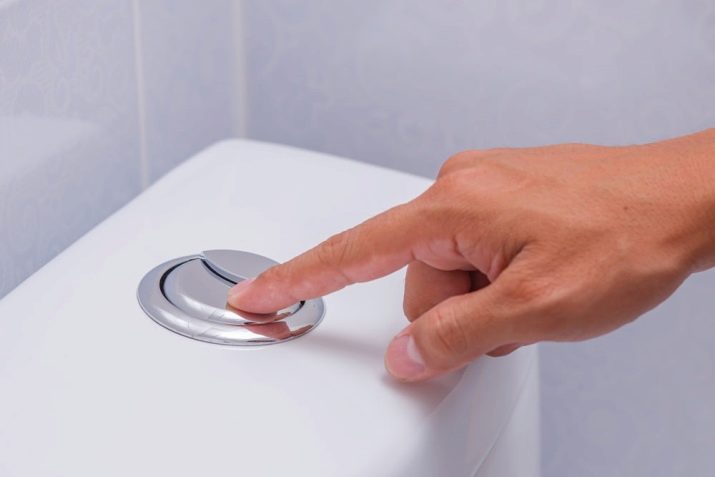
Installation methods
Another important fact when installing a toilet in your room is the fixing of the plumbing structure. It is this nuance that affects the design of the toilet room, and the possibility of installing engineering networks.
There are two types of toilets installation: floor and hanging.
Floor standing, the most familiar, for this type of installation does not require much effort. You just need to drill a few holes in the floor, install special bolts, and attach the structure. Moreover, you can place it in any place convenient for you.
If you become the owner of a comfortable and expensive toilet, then you need to "hang" it wisely and with the help of a specialist. They are mounted on a special installation, and that, in turn, is mounted on the wall.
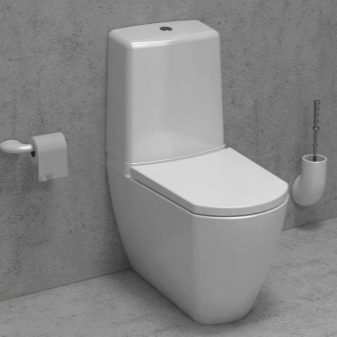
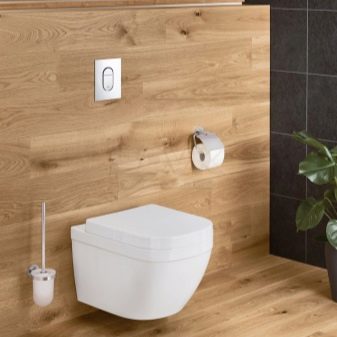
Materials (edit)
At the end of the topic, having decided on the type of drain and the shape of the design of the product itself, remember that earthenware toilets are a budget option, but in terms of durability they give way to porcelain ones. The porous material of earthenware requires special and careful care of the product, and, despite the fact that modern manufacturers use the latest technology (glazing), it is 100 percent impossible to cope with this.
Porcelain products are much more expensive, but they are very ergonomic and durable due to the small pore size, which allows the product to practically not absorb moisture.
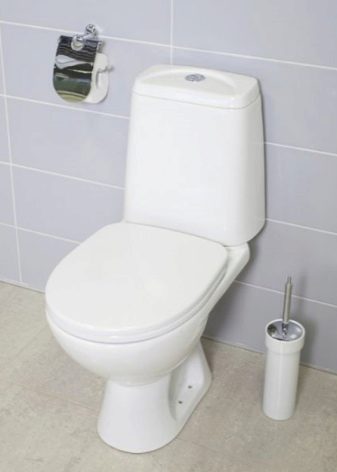
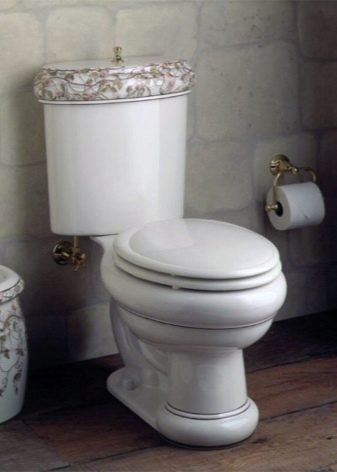
Be sure to consult with the seller or manager, tell him all your wishes, and your purchase will not disappoint you!
For information on how to choose a toilet, see the next video.









Thank you for the complete and interesting information.